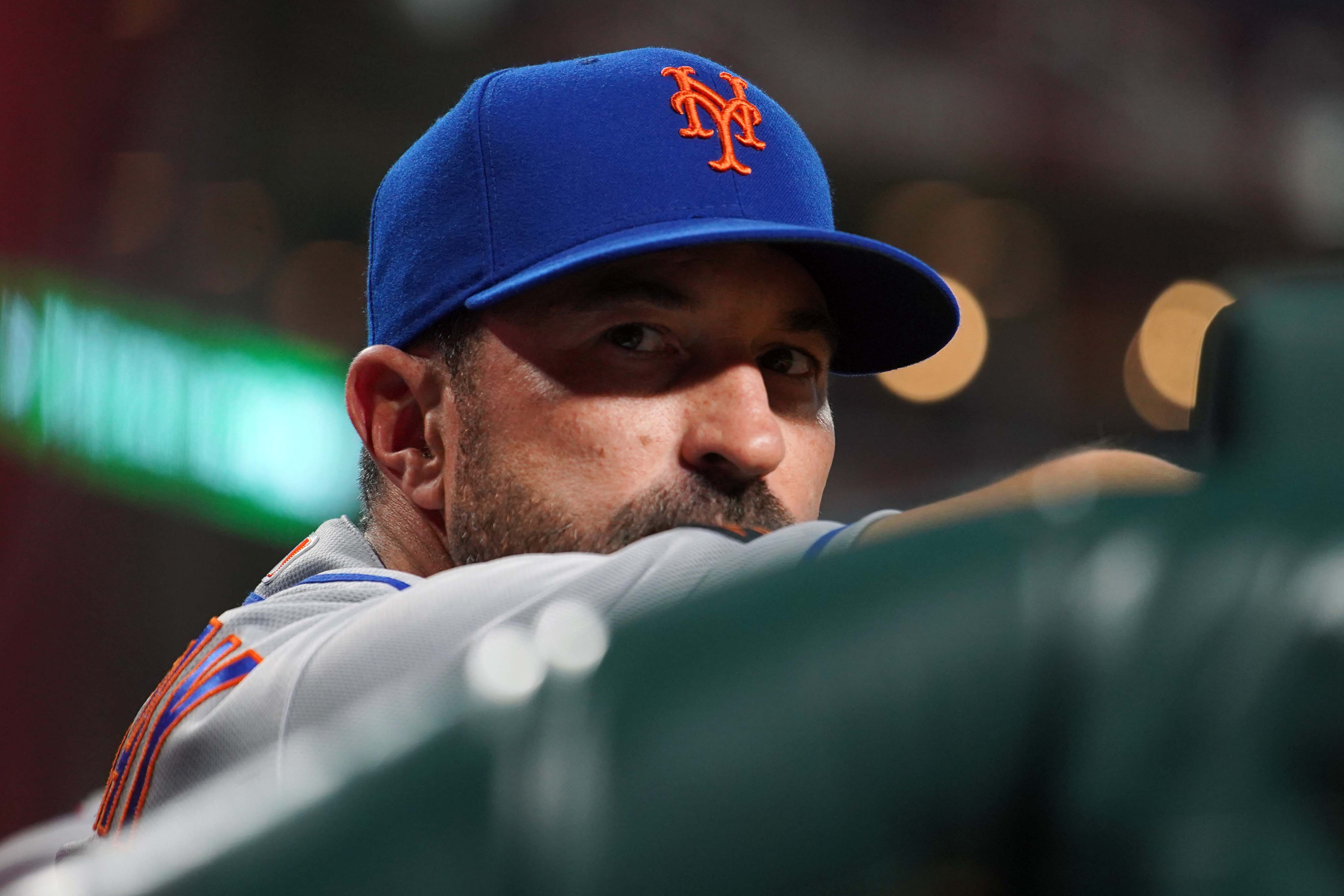Mets fans know what to expect every season. We trick ourselves into believing in empty promises of legendary rotations and big offseason spending, but we know. We know the starting pitchers will fail and the bullpen will be overworked and the position players will spend more time on the disabled list than on the field. We know John Mayberry Jr. and Danny Muno and Alejandro De Aza and Jose Reyes will get way too many at-bats. We know they’ll lose.
Does Mickey Callaway?
The Wilpons were never going to hire a manager who wouldn’t follow their directives. So they found an American League pitching coach who doesn’t know how to double switch or when to pull pitchers and an American League bench coach who, well, also doesn’t know how to double switch or pull pitchers. It’s worked out because Callaway, to a tee, has played by their rules. He’s prioritized the veterans and defended the incompetent and given the soundbites.
“I have 25 guys that I’m in charge of, and I go out there every day and try to put those guys in the best situation to succeed — whether it’s, okay, I know that these younger players need more development, (or) I know that these older players may need a day off or need more at-bats to keep them going,” he said recently.
If you scratch out the psychobabble, it says this: when he’s told to play Jay Bruce, through plantar fasciitis and a .613 OPS, he plays him. When he’s told to start Jose Reyes and his -0.7 WAR, he starts him. When he’s told to say Amed Rosario needs a mental health break or Luis Guillorme isn’t ready, he lets them rot on the bench.
I’m not in the room to ask if he really believes the words he’s saying, and the people in the room don’t ask. I don’t know if he drank the Kool-Aid or if he’s just doing what he’s been paid to do. But fans deserve to know.
In his defense, Callaway has not had great— or any— luck in his rookie season. He was handed a rotation that included Matt Harvey and Jason Vargas, an outfield based around the aforementioned Bruce and a roster built perilously on the idea that the team would be good if it was healthy, which is had never been before and almost certainly would still not be (spoiler alert: the team is not healthy). None of that is Callaway’s fault. He didn’t infect Anthony Swarzak with a strained oblique or steal Jerry Blevins’ curveball. He’s not in charge of calling up Peter Alonso or Jeff McNeil and he didn’t tender A.J. Ramos a contract. The team was always going to be bad.
Did he know that?
What I most want to know, I suppose, is what Callaway is doing. Is he a mouthpiece for a front office that promised Reyes at-bats out of some twisted loyalty to a man who was arrested for domestic violence? Is he trying — and failing — to win? Is he drowning? I don’t know which option I prefer, but I think an answer would tell us a lot about him. It would tell us a lot about the organization too. Are the Mets a professional sports team or a money-making enterprise that will survive as long as fans buy tickets and concessions and shirseys? What’s the priority?
This isn’t a discussion of whether Callaway can survive the heated New York media, which is what is normally meant by “can X manager/player/ball girl handle the job,” because the media isn’t heated. It’s a discussion of whether Callaway can handle the balancing act between obvious pressure from the front office and what’s actually best for the team — the two rarely line up. It’s a discussion of whether he knows how to get the best out of players. It’s a discussion of whether he knows what to do with them.
“Other than the seven homers, we did okay,” he said Monday of his bullpen after a mindnumbing loss to the Dodgers the night before.
He was joking, sure. But was it the joke of a man who thinks he can get more out of Chris Beck and Paul Sewald or a man who has two years left on a contract and knows Andrew Miller and Manny Machado aren’t walking through that clubhouse door next year?
A baseball team cannot admit it’s tanking. The Orioles and Marlins and White Sox have to feign a valiant attempt to win, if only so Rob Manfred can look the other way. Callaway cannot sit at his podium and say he’s given up on 2018. He has to pretend to try. The question is whether this is what it looks like when he’s trying or this is what he’s been told to look like.
Photo credit: Aaron Doster – USA Today Sports
